What Fish is Easy to Care for
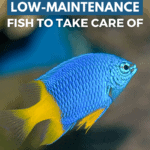
Have you been thinking of taking up fishkeeping as a hobby? Perhaps you just bought your first aquarium, and are looking for the easiest low-maintenance fish to take care of?
From beginners to novices alike, everyone appreciates fish that have a greater ability to thrive under a variety of different water conditions. While every fishkeeping enthusiast strives to ensure that water conditions remain as close to ideal as possible, the reality is fluctuations happen from time to time.
Having low-maintenance, hardy fish can set you up for success, as it maximizes your chances of having a tank full of happy, thriving fish. Read on to learn more about our top picks!
What is a Beginner-Friendly Fish?
While individual circumstances may vary, beginners tend to do best when they select fish that are hardy and able to withstand occasional mistakes made as part of the learning curve.
Replicating natural water conditions can be challenging for even seasoned fishkeepers, and beginners are likely to find this extra-challenging. Thus, it is important to pick species that can tolerate a wider range of water conditions, and adapt to different environments.
Another key feature of beginner-friendly fish is a peaceful temperament. Beginners gravitate towards community tanks as they provide greater variety and interest, which is why they need to select fish that can get along with their tankmates.
Fish with gentle demeanors do well in community tanks as they are not territorial and will not fight for dominance. This is definitely a key factor to consider in selecting beginner-friendly fish.
Tips That Every Beginner Fishkeeper Should Know
Being a beginner to fishkeeping can be overwhelming, as it is a hobby that requires a significant amount of technical knowledge, time, and homework. However, the intellectual challenge is part and parcel of what draws hobbyists to fishkeeping.
As you embark upon this journey, here are a few tips to bear in mind:
Don't Always Trust Your Local Fish Store Staff
When you're starting out, it can be tempting to turn to your local fish store staff for guidance on which fish you should pick.
Unfortunately, fish store employees usually make recommendations based on what's available in-store, rather than naming species that would be best for your needs. As you would expect, stores typically carry fish requiring different levels of care.
Left at the mercy of the fish store's inventory, you may end up choosing fish based on availability rather than suitability. This may cause you to end up with fish with highly specialized needs.
Therefore, the best approach is to do your research prior to approaching fish stores. Make sure you have a clear idea of what you're looking for!
Never Forget To Cycle a New Aquarium
Cycling a new aquarium sets you up for success, as it ensures that your tank contains all the helpful bacteria it needs to maintain optimal nitrite and ammonia levels. This is essential to the health of your fish.
It can be tempting to skip aquarium cycling as a beginner, as it is a process that takes multiple weeks. However, your patience will eventually pay off in the form of nitrifying bacteria that will help you build your dream aquarium.
While there are multiple ways to cycle an aquarium, people typically cycle their aquariums with hardy fish or with aquatic plants. The former allows you to keep hardy species of fish in your aquarium from Day 1, while the latter involves creating a gorgeous aquascape. A win either way!
Smaller Tanks are Not Easier To Keep Healthy
We've touched briefly on the importance of cycling an aquarium, but size is yet another factor that has a significant impact on the quality of your water.
Simply put, smaller tanks are more prone to overcrowding and overfeeding, which can lead to excess ammonia and nitrification in the water. This is extremely dangerous, as it can lead to the sickness or even death of your fish.
Larger ones are easier to keep healthy. For that reason, we recommend making a decision sized appropriately for the number of fish you own.
Beginner-Friendly Freshwater Fish
1. Neon Tetra (Paracheirodon innesi)
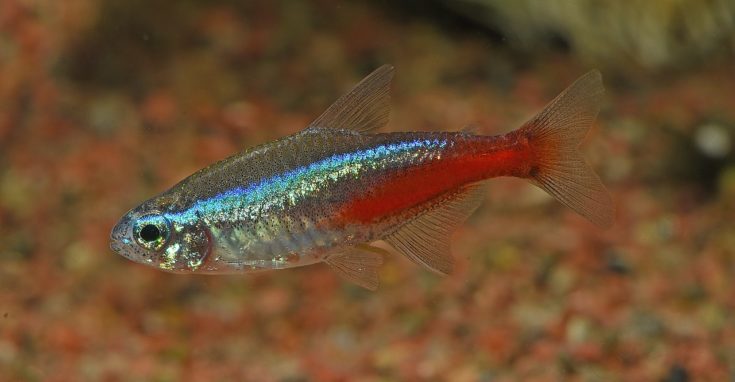
- Lifespan: 5-10 years
- Minimum Tank Size: 20 gallons
- Size: 1.2 inches
Did you know that 2 million Neon Tetras are sold in the US every month? With its distinctive neon blue and red-tinged color, the neon tetra makes an eye-catching addition to any freshwater aquarium.
However, these freshwater fish are more than just eye candy. They are also one of the most beginner-friendly fish due to their flexible dietary needs and peaceful dispositions.
These fish are great for kids looking to own starter pets. Parents need not worry about obtaining specialized food or having to isolate the neon tetras in a separate tank. Their hardiness also makes them resilient against any mistakes that might be made as part of the learning curve.
2. Bushynose Pleco (Ancistrus sp.)
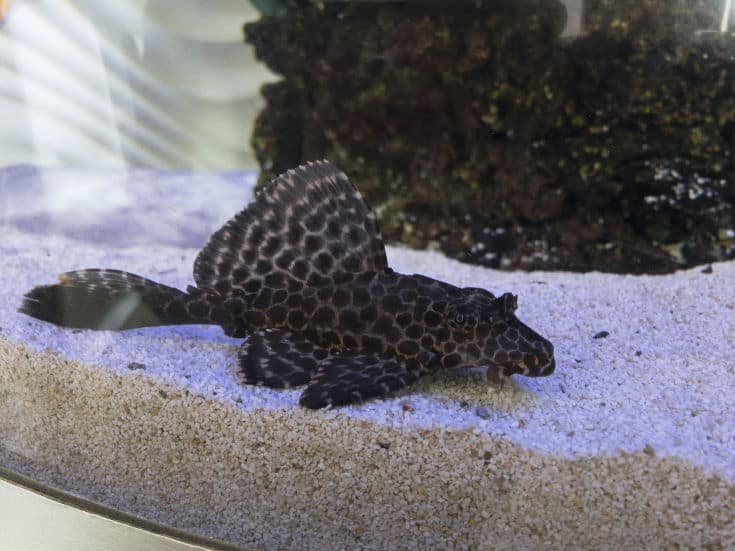
- Lifespan: 5+ years
- Minimum Tank Size: 25 gallons
- Size: 3-5 inches
A distinguished member of the catfish family, the pint-sized bushynose pleco has gained widespread popularity amongst fish enthusiasts for its compact size and ability to keep fish tanks algae-free.
These nocturnal bottom feeders thrive in peaceful community tanks with plenty of shaded areas and hiding spots. Though they're generally peaceful, it is best to avoid keeping two males in the same aquarium, as they can be territorial.
While bushynose plecos feed off the algae that grow on surfaces, they also require a small amount of protein in their diets. This can be obtained from specially-formulated sinking wafers and pellets, or from other protein-rich sources such as bloodworms.
3. Zebra Danio (Danio rerio)
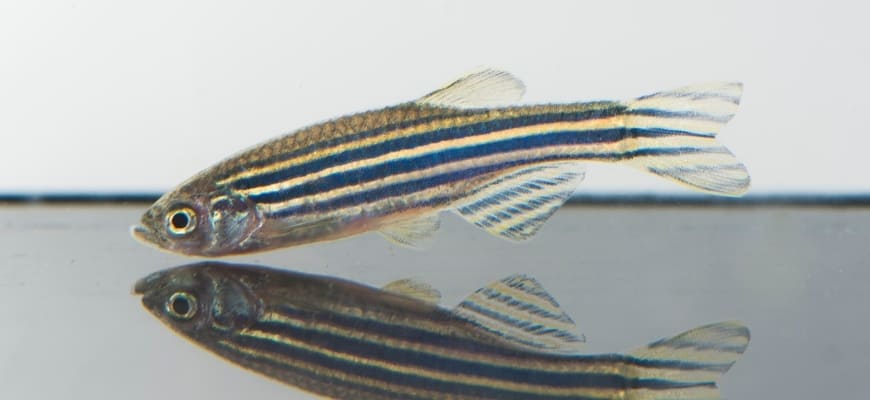
- Lifespan: 3-5 years
- Minimum Tank Size: 10 gallons
- Size: 1-2 inches
Did you know that the zebra danios share a 70% gene similarity with humans? Like us, they're social creatures with a friendly disposition, making them thrive in communities of fish with similar personalities.
Zebra danios need to be kept in shoals to feel at ease in their surroundings. These fish are highly playful, though aquarists should be careful when selecting tankmates as zebrafish may be tempted to nip at longer-finned fish.
Given their diminutive size, they are able to survive in tanks as small as 10 gallons. To add to their appeal as low-maintenance fish, they are omnivorous and can subsist on a diet of most store-bought fish flakes.
4. Southern Platyfish (Xiphophorus maculatus)

- Lifespan: 3-5 years
- Minimum Tank Size: 10 gallons
- Size: 3 inches
With a history that dates back to 1907, it should come as no surprise that the platy is a reliable pick for any aquarium. They are active, friendly, colorful fish that make a great addition to community tanks.
These hardy fish prefer aquariums that mimic their natural habitat in Central America but are resilient and are able to adapt to a broad range of water conditions. They are happiest in a well-planted environment lined with a gravel substrate.
Platy fish are omnivores with herbivorous preferences. They can be content with regular fish flakes, but will thrive on a diet rich in vegetables and small quantities of high-quality protein.
5. Dwarf Neon Rainbowfish (Melanotaenia praecox)
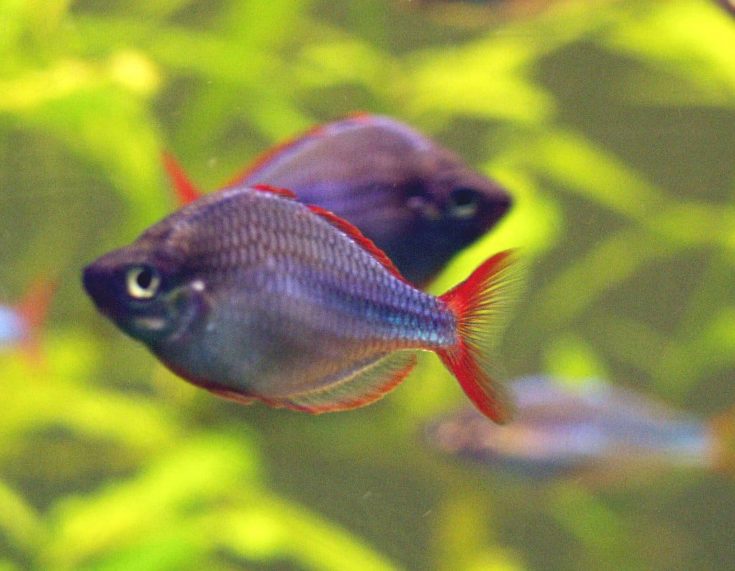
- Lifespan: 5 years
- Minimum Tank Size: 20 gallons
- Size: 3 inches
Like most beginner-friendly fish, the neon rainbowfish prefers, but does not require specific conditions to survive. For instance, though it prefers harder water, it can survive in most bodies of water, provided that they aren't too acidic.
Their flexibility extends to their dietary habits. As omnivorous fish, they can subsist on a diet of regular fish flakes, but will also happily indulge in the occasional bloodworm or brine shrimp.
True to their name, the neon rainbow fish dazzles with its iridescent scales, particularly when they swim against well-planted tanks. Because of their timid nature, we recommend keeping these fish in groups of at least 6 individuals.
6. Common Guppy (Poecilia reticulata)
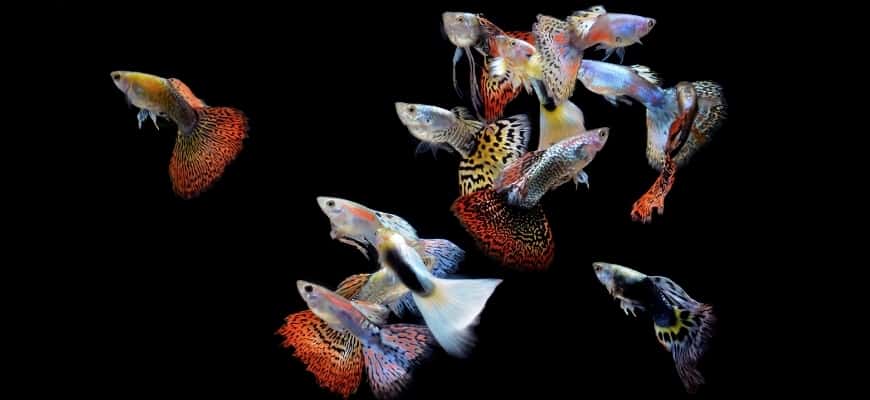
- Lifespan: 2 years
- Minimum Tank Size: 10 gallons
- Size: 2 inches
Guppies are prized among aquarists for their hardy nature and beautiful These livebearing fish do well in community tanks, as they have peaceful personalities and an ability to tolerate a wide range of water conditions.
7. Cherry Barb (Puntius titteya)
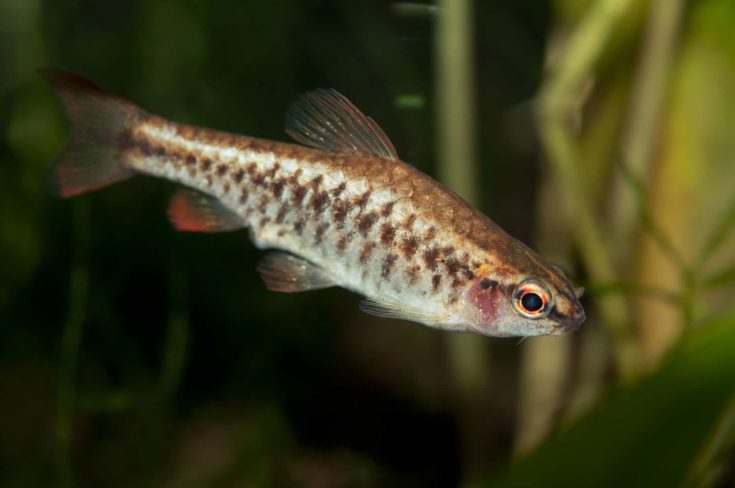
- Lifespan: 5-6 years
- Minimum Tank Size: 30 gallons
- Size: 2 inches
Cherry Barbs add a vibrant pop of color to freshwater tanks thanks to their distinctive appearance and schooling behavior. Male fish tend to be brighter in color than their female counterparts.
To help these fish feel at home, it is important to house them in a school, and provide them with tank mates that are peaceful. These amicable fish are also easy to maintain.
8. Firemouth Cichlid (Thorichthys meeki)
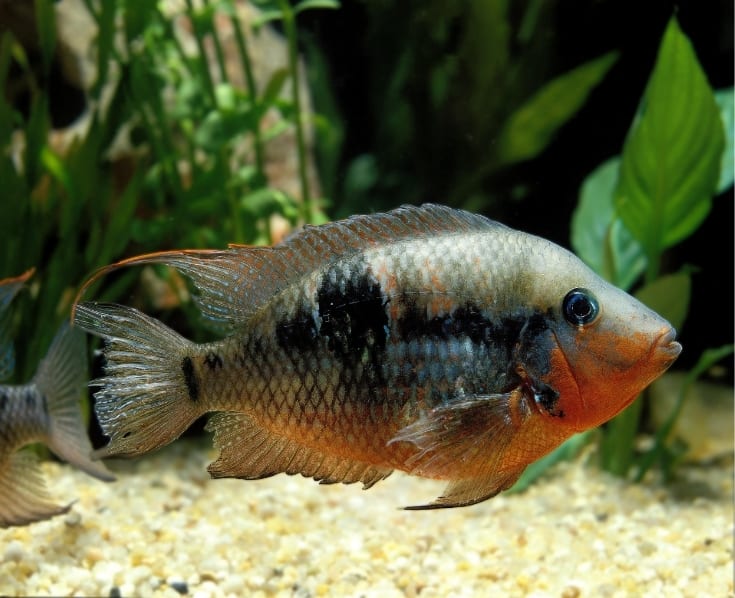
- Lifespan: 15 years
- Minimum Tank Size: 30 gallons
- Size: 6 inches
9. Harlequin Rasbora (Trigonostigma heteromorpha)
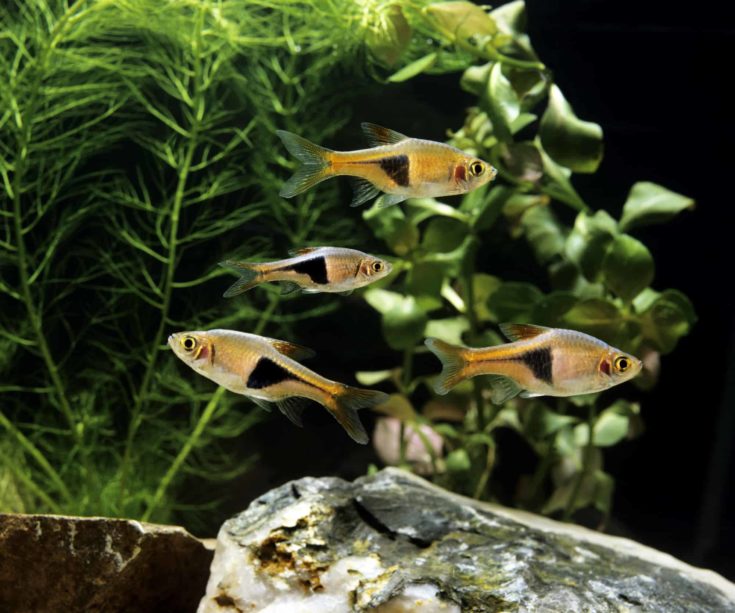
- Lifespan: 5-8 years
- Minimum Tank Size: 10 gallons
- Size: 2 inches
Harlequin Rasboras are the epitome of a low-maintenance fish. These omnivorous fish happily feast on any type of food that comes their way, and are able to thrive in most relatively well-maintained tanks.
Because of their shoaling behavior, they add a lot of visual interest to the middle of the tank. They are a good match for other peaceful types of fish that enjoy lingering in different parts of the tank.
10. King Tiger Pleco (Hypancistrus sp. )
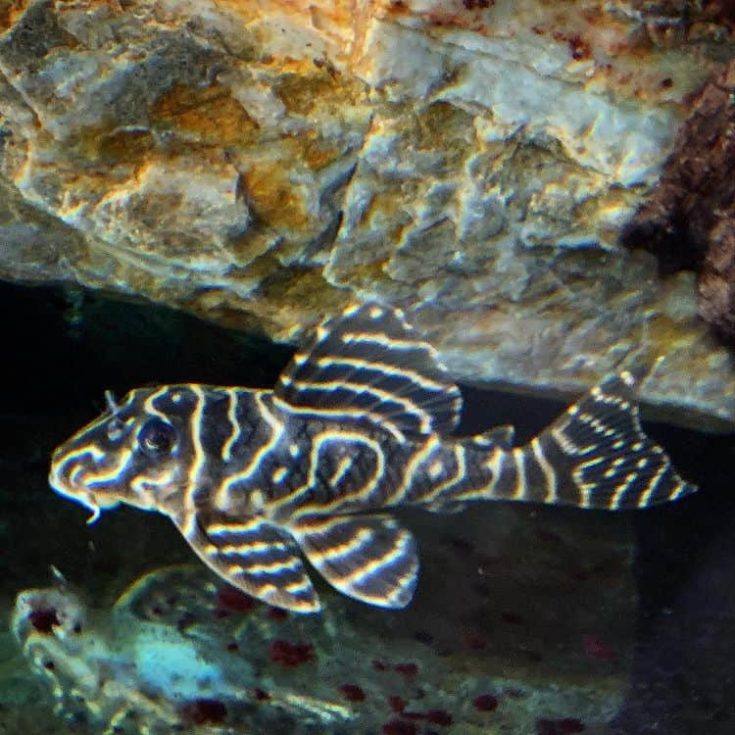
- Lifespan: 10 years
- Minimum Tank Size: 30 gallons
- Size: 5-6 inches
11. Cory Catfish (Corydoras)
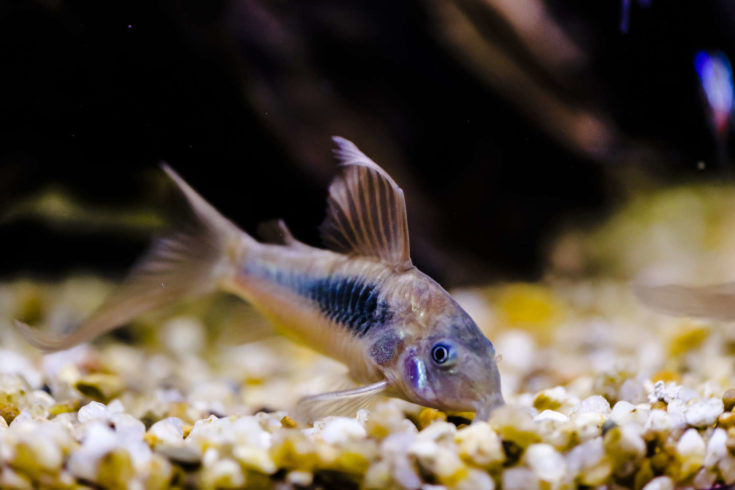
- Lifespan: Up to 20 years
- Minimum Tank Size: 20 gallons
- Size: 2.5 – 4 inches
The Cory Catfish is notably easy-going, peaceful, and low-maintenance. A bottom feeder with omnivorous dietary preferences, it happily feasts on morsels of food that drift to the bottom of the tank, keeping your substrate clean.
These fish are also fairly social, and would thrive in groups of 6-7. They can be housed with other fish with peaceful temperaments.
12. Common Molly (Poecilia sphenops)
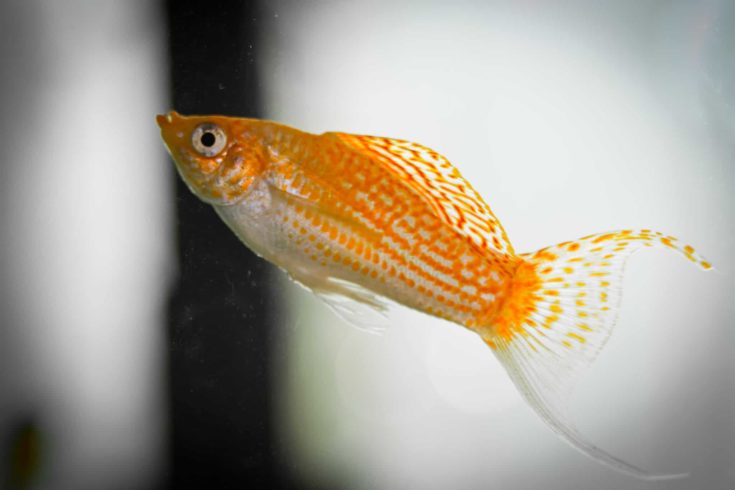
- Lifespan: Up to 5 years
- Minimum Tank Size: 10 gallons
- Size: Up to 4.5 inches
The Common Molly is easy to breed, tough, and widely available, making this yet another noteworthy addition to our list. Like other livebearers, they are able to adapt to a wide variety of water conditions, making them appropriate for beginners.
Though Mollies are usually friendly, shoals should be composed of mostly females as males may act aggressively.
13. Green Swordtail (Xiphophorus hellerii)
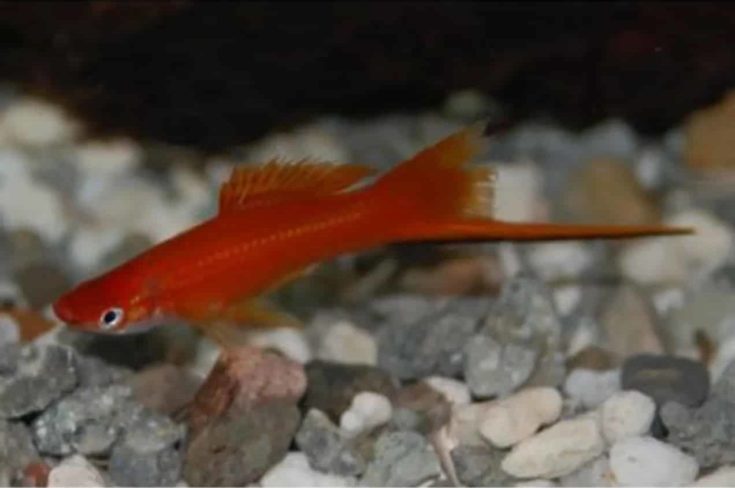
- Lifespan: 5 years
- Minimum Tank Size: 15 gallons
- Size: 5-6 inches
It is almost impossible to miss the sword-like caudal fin of the Green Swordtail fish, which gives it its name. However, only the male members of this livebearing species possess this distinctive feature.
Male or female, the Green Swordtail is known for its peaceful, social personality. Like most livebearing fish, it is hardy and great for first-time fish owners.
Low-Maintenance Saltwater Fish
14. Clownfish (Ocellaris clownfish)
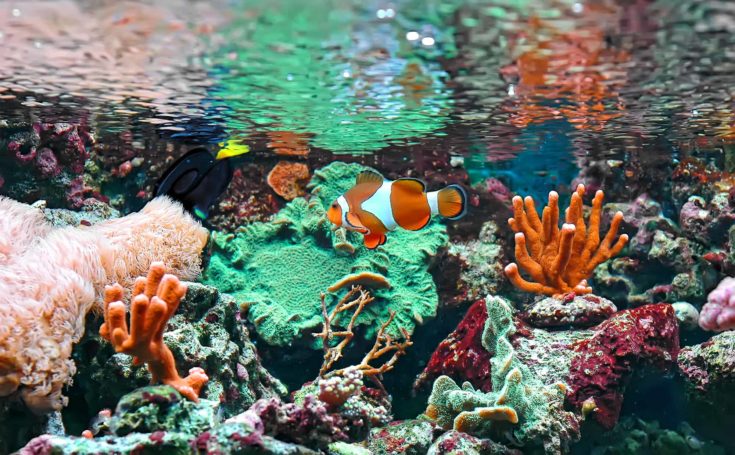
- Lifespan: 6 years
- Minimum Tank Size: 20 gallons
- Size: 3-4 inches
While most fish enthusiasts recommend freshwater species for absolute beginners, the allure of marine fish can be hard to resist. If you're looking for a loveable yet resilient addition to your saltwater tank, look no further than the clownfish. It is the most popular saltwater fish for a reason!
Clownfish are commonly seen as one a low maintenance fish to take care of because of their compact size and hardy nature. These pint-sized fish rarely exceed 4 inches in length, which allows them to thrive in relatively small, 20-gallon aquariums
Peaceful by nature, clownfish can often be seen in community tanks alongside fish of similar temperaments. However, note that different species of clownfish should not be kept together, as this may cause territorial behavior. It'll pay to familiarize yourself with different clownfish species like the Ocellaris and Percula clownfish.
15. Lawnmower Blenny (Salarias fasciatus)
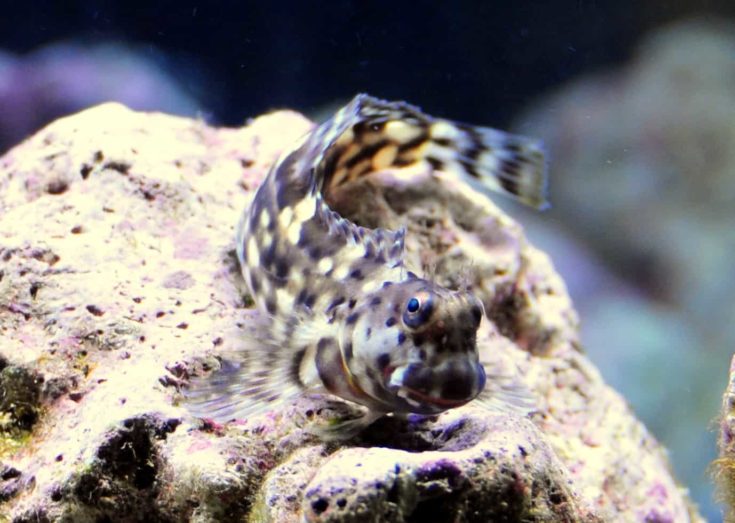
- Lifespan: 2-4 years
- Minimum Tank Size: 40 gallons
- Size: 5 inches
With its interesting appearance and algae-munching habits, you might not be surprised to learn that the lawnmower blenny has captured the hearts of marine aquarists all over the world. However, they are also one of the easiest fish to take care of.
Their ability to withstand small changes in water conditions makes them ideal for beginners. However, it is important to ensure that aquariums are relatively well-established and contain sufficient algae before introducing lawnmower blennies to their new home.
These peaceful, friendly fish do well in community tanks filled with other peaceful fish. However, it is best to only keep one lawnmower blenny, as they have a tendency to act aggressively towards their own kind.
16. Chalk Bass (Serranus tortugarum)
- Lifespan: 1-2 years
- Minimum Tank Size: 20 gallons per individual
- Size: 3-4 inches
The Chalk Bass maxes out at 3 inches in length and makes solid additions to any beginner's aquarium. These easy-going fish can be kept solo or in shoals. When kept in a community aquarium, they are well-behaved and will leave other fish and corals alone.
The best tankmates for this gentle fish share its demeanor. Steer clear of aggressive fish or territorial fish, and you'll have a happy, healthy fish on your hands.
This is especially the case as the Chalk Bass is known for being able to withstand slight changes in water conditions. It is also resilient against illnesses. A great pick for marine fish enthusiasts who want an easy fish to take care of!
17. Pajama Cardinalfish (Sphaeramia nematoptera)
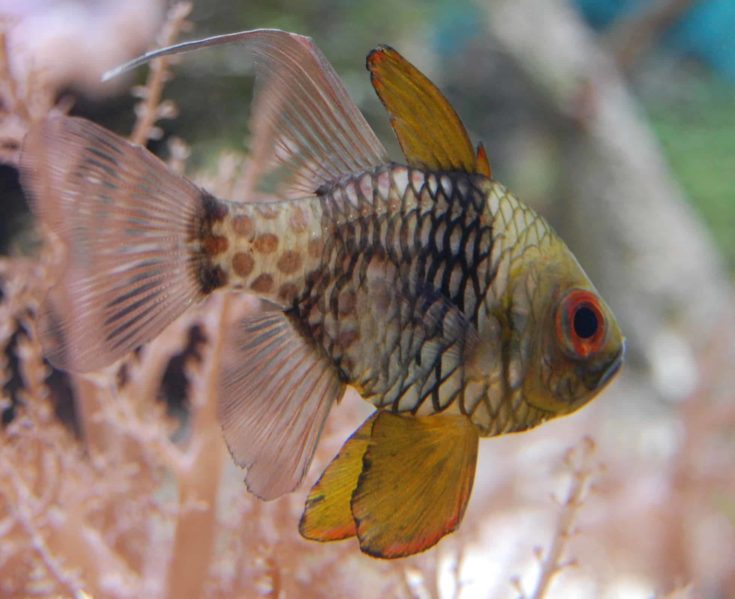
- Lifespan: 5 years
- Minimum Tank Size: 30 gallons
- Size: 3 inches
If you're looking for a marine fish that's easy to keep alive, the pajama cardinalfish makes an excellent choice. These colorful, spotted fish are one of the most popular pet fish for a reason – they have an excellent temperament.
These timid fish require a school in order to feel a sense of safety and stability, and we recommend getting a group of at least 6 fish. Species who share their desire for harmonious coexistence would make excellent tankmates.
One thing to bear in mind is their need for a carnivorous diet. Feed these charming little fish with brine, bloodworms, and other protein-rich food. They have ravenous appetites, and will thank you for it!
18. Damselfish (Poecilia reticulata)
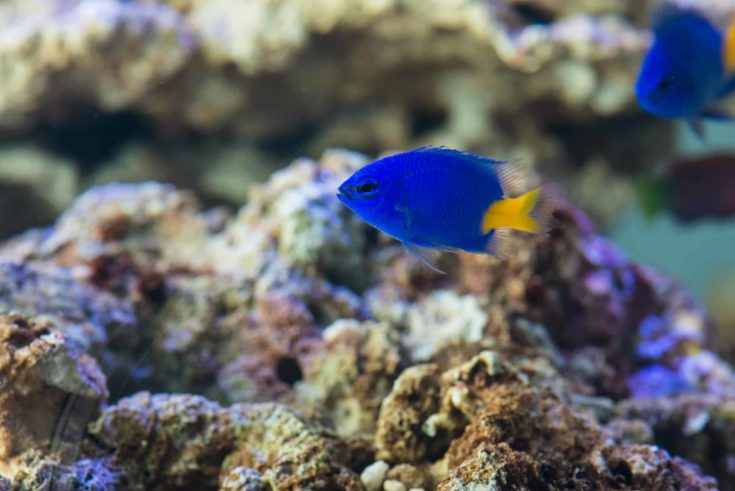
- Lifespan: 5-6 years
- Minimum Tank Size: 30 gallons
- Size: 3 inches
The damselfish makes our list because it is a low-maintenance, beautiful fish that's resilient against most beginner mistakes. They are also easy to care for due to their omnivorous food preferences – fish flakes will do just fine.
One thing to bear in mind is that due to its territorial temperament, it should either be housed alone, or in community tanks containing fish with moderately aggressive personalities. This will create a safe and secure environment for all your fish.
19. Elegant Firefish (Nemateleotris decora)
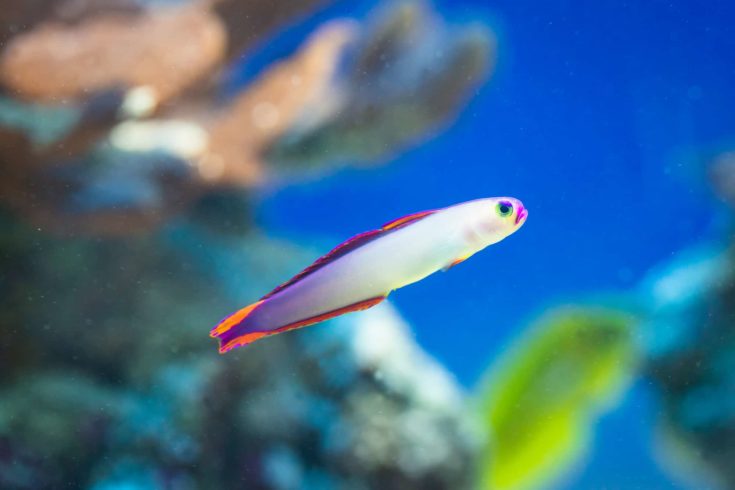
- Lifespan: 3 years
- Minimum Tank Size: 10 gallons
- Size: 4 inches
The elegant firefish is one of the most popular varieties of dartfish available, and for good reason. Boasting a stunning array of colors and an ability to withstand small changes in their environment, these fish are perfect for beginners and movies alike.
This gorgeous species is, for the most part, a peaceful fish. They get along well with most other species of fish, though they may act aggressively towards their own kind.
While elegant firefish aren't particularly picky with their food, they do best on a carnivorous diet. Feed them a consistent diet of protein-rich foods to maintain their health.
20. Yellow Watchman Goby (Poecilia reticulata)
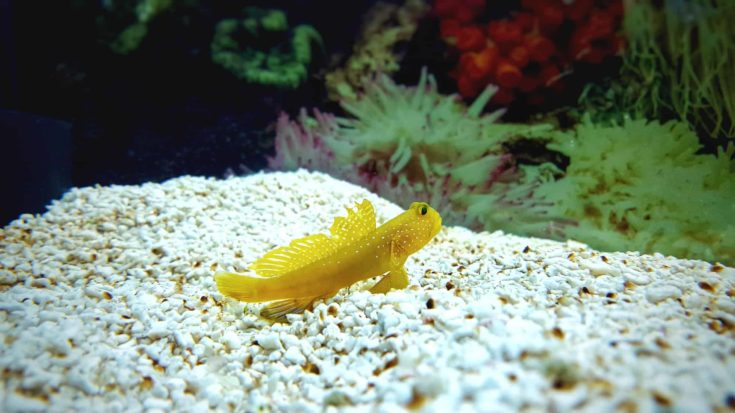
- Lifespan: Up to 10 years
- Minimum Tank Size: 30 gallons
- Size: 3-4 inches
The most endearing quality of the Yellow Watchman Goby has to do with its relationship with the pistol shrimp. The pistol shrimp shares its well-constructed home with the goby, who in turn alerts the shrimp whenever predators lurk.
For the most part, the Yellow Watchman Goby gets along with other fish, but it should only be kept alone in a tank, or as part of a mated pair.
This bottom-dwelling fish likes to spend time by its burrow, and feeds on food that sinks to the bottom of the tank.
21. Green Chromis (Chromis Viridis)
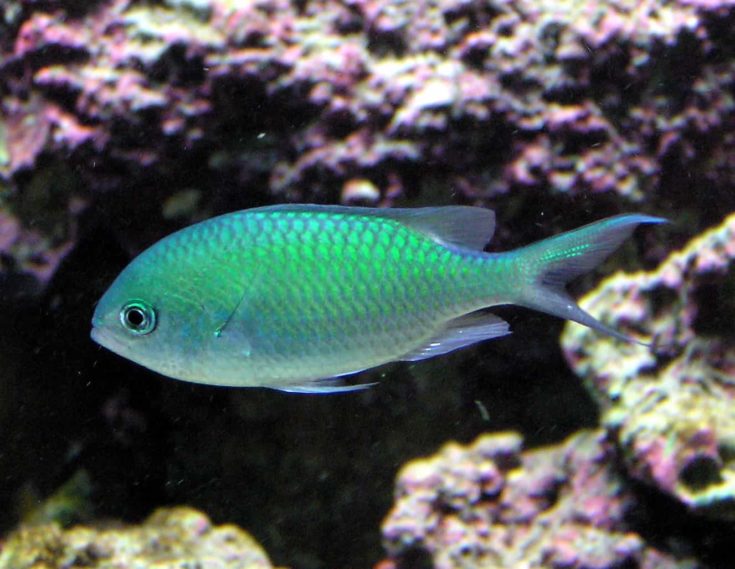
- Lifespan: 8+ years
- Minimum Tank Size: 30 gallons
- Size: 4 inches
Most marine tanks will feature at least one Green Chromis, and for good reason. These playful, peaceful fish make great tankmates for most peaceful species, and can even live as a shoal.
The Green Chromis makes an exceptionally good fish for beginners, as they are resilient. They are also omnivores who will eat almost any type of food. This, coupled with its charming personality, makes it a great addition to community tanks.
Conclusion
For absolute beginners, the best fish are ones that can thrive under less-than-ideal water conditions as you overcome the learning curve.
When starting a new tank, it is common to create conditions where excess ammonia and nitrates build-up due to overcrowding and overfeeding. Having fish that can tolerate these mild fluctuations can ensure that you have an aquarium full of healthy fish!
Did you enjoy this article? Have an excellent beginner-friendly fish you'd like to recommend? Let us know in the comments below!
Source: https://www.tankarium.com/easiest-fish-to-take-care-of/